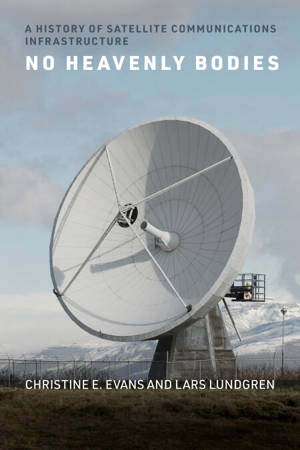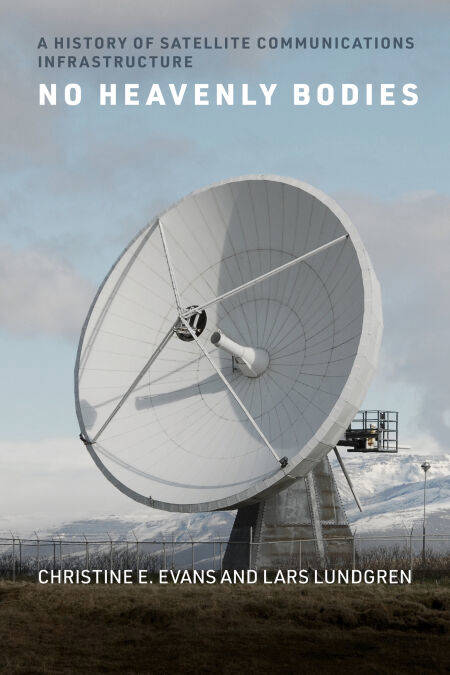
- Afhalen na 1 uur in een winkel met voorraad
- Gratis thuislevering in België vanaf € 30
- Ruim aanbod met 7 miljoen producten
- Afhalen na 1 uur in een winkel met voorraad
- Gratis thuislevering in België vanaf € 30
- Ruim aanbod met 7 miljoen producten
No Heavenly Bodies E-BOOK
A History of Satellite Communications Infrastructure
Christine E. Evans, Lars Lundgren
€ 39,42
+ 39 punten
Omschrijving
The compelling and little-known history of satellite communications that reveals the Soviet and Eastern European roles in the development of its infrastructure.
Taking its title from Hannah Arendt’s description of artificial earth satellites, No Heavenly Bodies explores the history of the first two decades of satellite communications. Christine E. Evans and Lars Lundgren trace how satellite communications infrastructure was imagined, negotiated, and built across the Earth’s surface, including across the Iron Curtain. While the United States’ and European countries’ roles in satellite communications are well documented, Evans and Lundgren delve deep into the role the Soviet Union and other socialist countries played in shaping the infrastructure of satellite communications technology in its first two decades.
Departing from the Cold War binary and the competitive framework that has animated much of space historiography and telecommunications history, No Heavenly Bodies focuses instead on interaction, cooperation, and mutual influence across the Cold War divide.
Evans and Lundgren describe the expansion of satellite communications networks as a process of negotiation and interaction, rather than a simple contest of technological and geopolitical prowess. In so doing, they make visible the significant overlaps, shared imaginaries, points of contact and exchange, and negotiated settlements that determined the shape of satellite communications in its formative decades.
Taking its title from Hannah Arendt’s description of artificial earth satellites, No Heavenly Bodies explores the history of the first two decades of satellite communications. Christine E. Evans and Lars Lundgren trace how satellite communications infrastructure was imagined, negotiated, and built across the Earth’s surface, including across the Iron Curtain. While the United States’ and European countries’ roles in satellite communications are well documented, Evans and Lundgren delve deep into the role the Soviet Union and other socialist countries played in shaping the infrastructure of satellite communications technology in its first two decades.
Departing from the Cold War binary and the competitive framework that has animated much of space historiography and telecommunications history, No Heavenly Bodies focuses instead on interaction, cooperation, and mutual influence across the Cold War divide.
Evans and Lundgren describe the expansion of satellite communications networks as a process of negotiation and interaction, rather than a simple contest of technological and geopolitical prowess. In so doing, they make visible the significant overlaps, shared imaginaries, points of contact and exchange, and negotiated settlements that determined the shape of satellite communications in its formative decades.
Specificaties
Betrokkenen
- Auteur(s):
- Uitgeverij:
Inhoud
- Aantal bladzijden:
- 256
- Taal:
- Engels
- Reeks:
Eigenschappen
- Productcode (EAN):
- 9780262376822
- Verschijningsdatum:
- 27/11/2023
- Uitvoering:
- E-book
- Beveiligd met:
- Adobe DRM
- Formaat:
- ePub

Alleen bij Standaard Boekhandel
+ 39 punten op je klantenkaart van Standaard Boekhandel
Beoordelingen
We publiceren alleen reviews die voldoen aan de voorwaarden voor reviews. Bekijk onze voorwaarden voor reviews.








